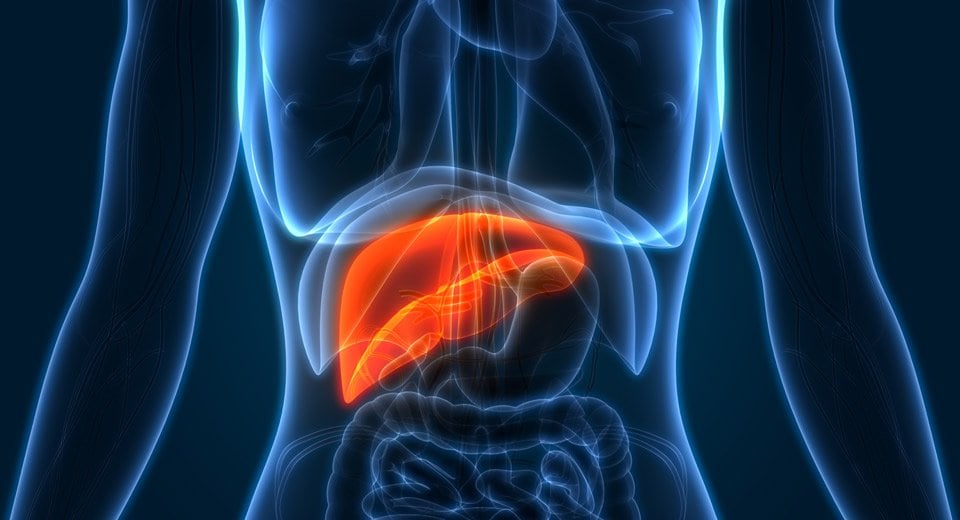This new liver cancer treatment can set some patients on the path to being cured

While Yttrium-90 radioembolization sounds like something from a science fiction movie, it is actually a new treatment for advanced stage liver cancer that can delay the progression of the disease, prolong the life of a patient, and in some cases provide a path to being curative.
“Y 90 therapy is minimally invasive treatment that consists of tiny beads (microspheres) about the size of sand placed in blood vessels that supply the liver tumor,” said Luke Higgins, MD, an interventional radiologist with Cape Cod Healthcare Cardiovascular Center- Interventional and Surgical Services. “The beads contain yttrium-90 (a radioactive isotope) that will deliver radiation to the tumor to kill it or reduce it in size over a period of about two weeks. It is a very well-tolerated therapy with few if any side effects.”
Types of Liver Cancer
Hepatocellular carcinoma, a cancer that forms in the liver, and bile duct cancer (cholangiocarcinoma) that forms in the bile ducts are the two main types of liver cancer, according to the National Cancer Institute. The liver is also one of the most common sites for cancer that spreads from other cancers, including colorectal, breast, esophageal, stomach, pancreatic, lung, kidney, and melanoma skin cancers, according to the American Cancer Society.
“When a patient is diagnosed with liver cancer, they come to our clinic to see one of the interventional radiologists or interventional oncologists for evaluation,” said Dr. Higgins. “We also interact with the medical oncologists at the Davenport-Mugar Cancer Center.”
The two major populations of patients he sees are those with metastatic liver cancer and those with hepatocellular liver cancer, he said.
Benefits of Y90 Treatment
The list of benefits of Y90 radioembolization, according to Dr. Higgins, include the following:
- The most common cancer that spreads to the liver is colorectal cancer. Y90 radioembolization basically kills the tumors on the liver, which in turn improves the life of the liver and in turn improves the life of the patient.
- In some patients, the treatment can have a significant 15–18-month survival benefit.
- Only 10 percent of patients with colorectal cancer that has spread to the liver are eligible to have surgery to remove the tumors. The 90 percent that can’t have surgery will have chemotherapy with different drugs that will be added along the way. Studies found that if patients get chemotherapy, then Y90 radioembolization and then continue chemotherapy, it increases their survival rate and improves the efficacy of the chemotherapy. It keeps their cancer at bay longer.
- Another option for those with cancer that has spread to the liver is to shrink the tumor with Y90 radioembolization, so they are then able to have surgery to remove the tumor or a segment of the tumor and prolong their life.
- Y90 radioembolization can also be a curative or a bridge to a liver transplant for patients with hepatocellular carcinoma. Once the tumor or tumors are down staged and can be removed, a patient can be cured for a period of time. If they meet the criteria for a liver transplant, their life could be extended up to 10 years, according to the National Cancer Institute.
Patient Examples
Dr. Higgins spoke about two patients for whom the Y90 treatment has been beneficial.
One of his patients has a common metastatic cancer to the liver. (The patient) was not tolerating chemotherapy and there were no other options. “We spoke with (the patient) about the Y90 radioembolization treatment and they agreed to do it. It gave (the patient) an option to have hope and a therapy that gave them another possibility for treatment,” he said
Another of his patients had hepatocellular cancer of the liver and was not a candidate for surgery or an ablation (a procedure that destroys liver tumors without removing them). “We did the Y90 treatment and now the tumor is 99.9 percent gone,” Dr. Higgins said. The patient will have radiofrequency ablation to get rid of the remaining tumor and then they will be considered cancer-free. “(The patient) will need to continue with surveillance but is doing well,” he said.
“This new treatment offers options to patients that they didn’t have before,” he said. “I look at Y90 as driving forward and allows patients to have access to other therapies they wouldn’t have otherwise and bridges the gap to a lot of different opportunities, which has been helpful.”
